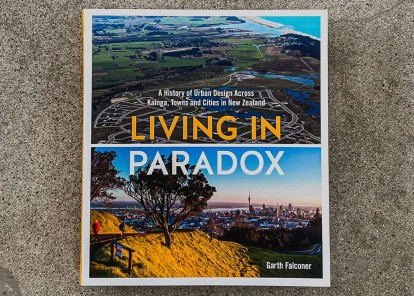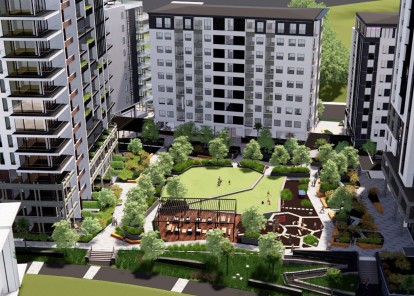Fresh Thinking Needed on Second Auckland Harbour Crossing
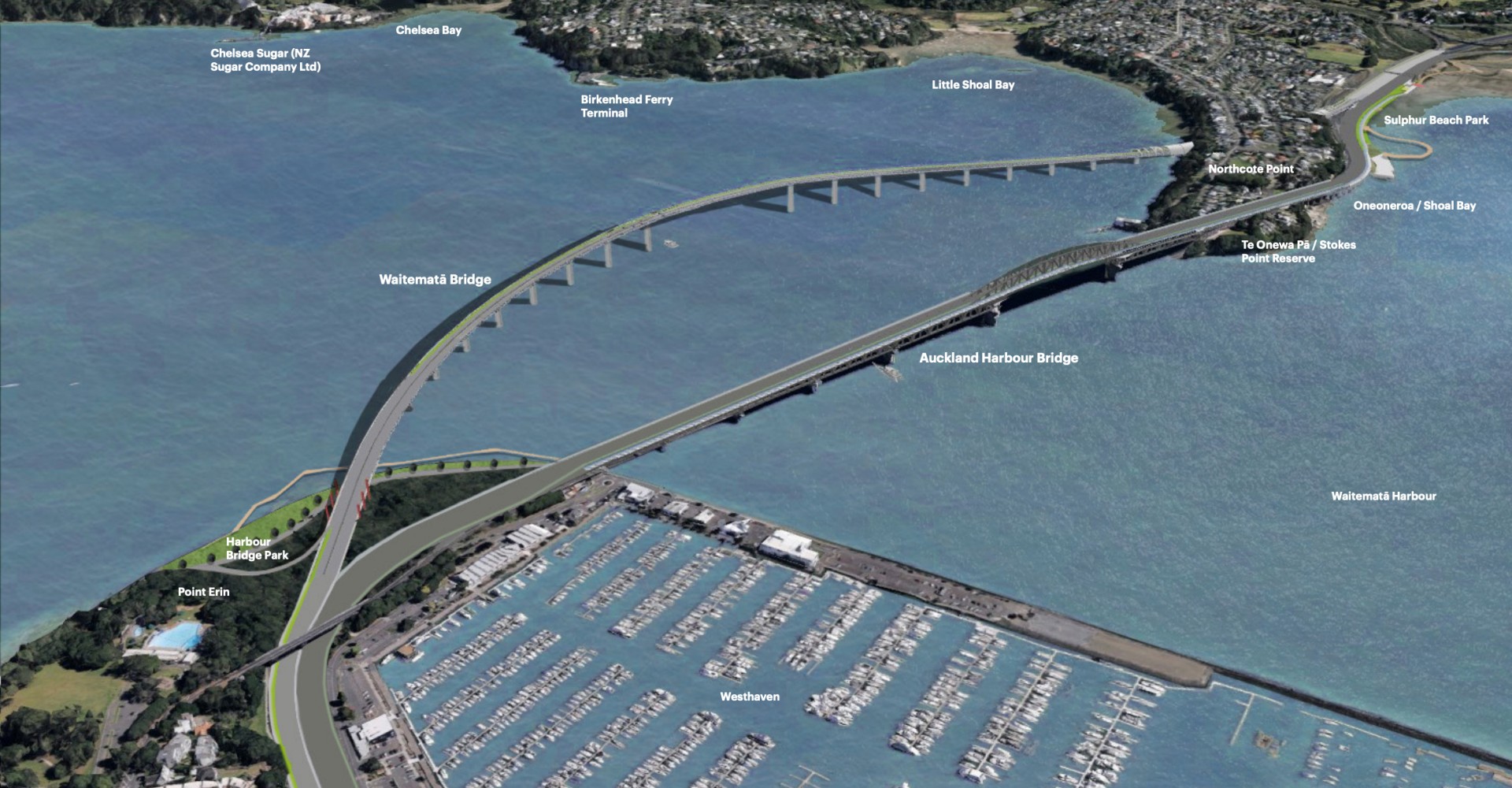
Internationally award-winning New Zealand urban design agency, Reset, commends Auckland’s Mayor for discrediting the idea of a $17 billion tunnel crossing, and suggests the best solution for a second crossing is an additional bridge is to the western side of the Auckland Harbour Bridge.
Reset co-director Garth Falconer says a second Waitematā Bridge set inconspicuously to the west of the current bridge, splaying off from Point Erin could be built within 10 years, with less risk than any tunnel option and will sensitively fit into the harbour’s landscape and not encroach on Northcote Point or Westhaven.
“The new Waitematā Bridge together with the repurposing of the Auckland Harbour Bridge will cost under $2.5 billion. Mayor Brown is absolutely right to oppose the prohibitively expensive tunnel proposed by the previous government which would take several decades to build and do little for urban regeneration or congestion redistribution,” says Mr Falconer.
The second bridge as proposed by Reset would arc outwards c. 500-metres from the Auckland Harbour Bridge before passing through a short culvert at the base of the Northcote peninsula to merge seamlessly with the existing motorway.
With the second bridge in place, traffic lanes would be split and shared, with northbound lanes on the new six-lane bridge and south bound traffic on the eight-lane Auckland Harbour Bridge.
There could be dedicated public transport lanes in both directions, and on the eastern side of the Auckland Harbour Bridge, two of the outside lanes can be freed exclusively for walking and cycling.
This plan would reduce the loading on the existing bridge.
Using similar technology from the recently built Pelješac Bridge in Croatia, the sides of both bridges can support a three-metre-high plexi glass louver system which will halve wind speed and allow for continual operation even in the severest of storms.
“This second bridge will have minimal disruption to adjacent communities and can be anchored by destination harbourside parks at either end, together with a walk and cycleway along the edge of Shoal Bay, linking to Takapuna,” says Mr Falconer.
Reset has also determined that in the future, a third bridge will be needed to further alleviate traffic.
“In time, with Auckland’s growth, we will need to better connect Auckland’s North and South by moving traffic away from the central city. A third bridge that links State Highway 20 Waterview northward to Greenhithe, then onto the northern motorway would create a bypass and a five-kilometre saving away from the central city.
“This could be a low-pitched thin line Causeway Bridge stretching across the upper harbour from west of Point Chevalier avoiding the suburb and largely the Significant Ecological Area and connecting into Beach Haven which has been an oddly isolated central city suburb on the harbourside,” says Mr Falconer.
The agency has done work on the third bridge idea, demonstrating that it would be around 10 kilometres long, 30-metres wide and for the most part eight-metres high. It would include six traffic and public transport lanes with five-metre-wide walking and cycling lanes to include rest stops for viewing and fishing.
Constructed of low-carbon concrete and on piers, this low Causeway Bridge would provide minimal disruption visually and ecologically.
Estimates by the agency show that if 20 percent of traffic currently using the Auckland Harbour Bridge (an average around 170,000 per day) takes the Causeway Bridge bypass, 62,050,000 kilometres would be saved each year. This third bridge would also save 11,212 tonnes of CO² emissions per year, based on average car emissions of 180 grams per kilometre.
The build costs of the Causeway Bridge will be c. $3 billion and would be relatively low risk being freestanding. The new link would be a catalyst for a major urban regeneration programme in Beach Haven and Birkdale, which could provide for 3,000 new homes and new employment opportunities.
“The Causeway Bridge can be a thing of real beauty, its serpentine line echoing the fluvial inter tidal shapes and forms of the Upper Harbour. Together with the curving Waitematā Bridge it will create a new level of key infrastructure that displays a sensitive understanding and a love for our harbour city,” says Mr Falconer.
ENDS
Overviews of Reset’s Waitemata Bridge and Causeway Bridge options are below, or you can download the PDF versions:
Waitemata Causeway Bridge Abbreviated Study
Waitemata Causeway Bridge Full Study.
For interviews and further information contact: Penny Hartill, Director, hPR 021 721 424, penny@hartillpr.co.nz
Editor’s Notes
Reset is a leading urban design and landscape architecture practice. Established in 2008, its team of practitioners work with clients internationally in China and the Pacific Islands, and locally with central government, iwi, local councils, public institutions, commercial and private property owners. Reset actively engages in co-design with communities and research including having contributed two published books on the history of urban design in New Zealand. It has won many local and international landscape architecture awards including two International Federation of Landscape Architecture Climate Change Design Awards in 2022 (Aitutaki Town Plan and Avarua Plan); and an International Federation of Landscape Architecture Award of Excellence in 2023 (Wānaka Lake Front Development). www.reseturban.co.nz
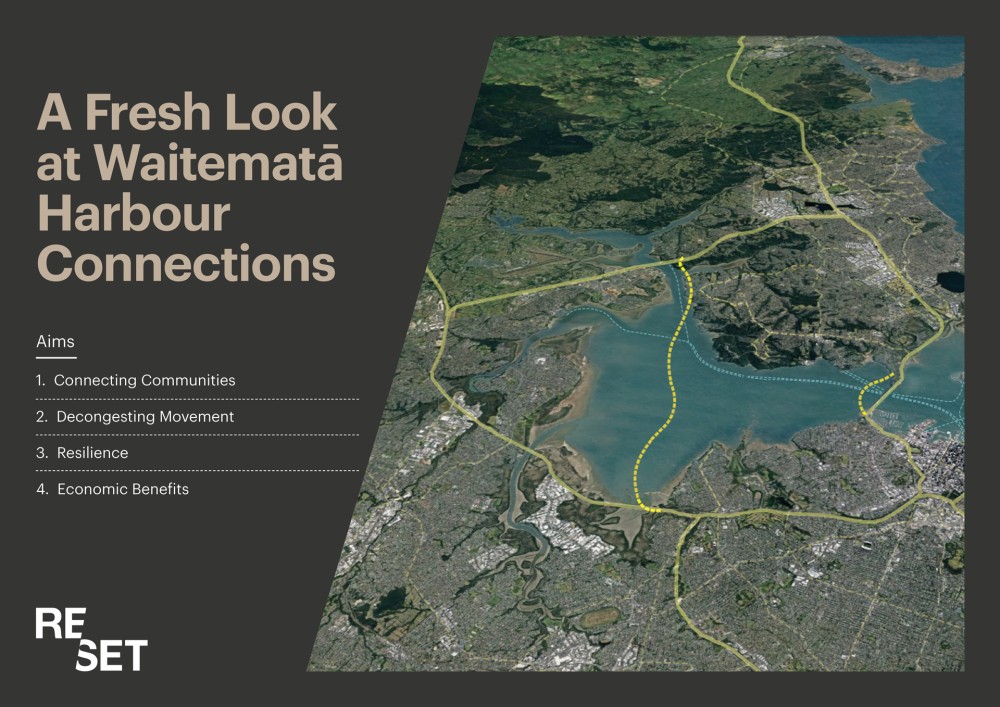
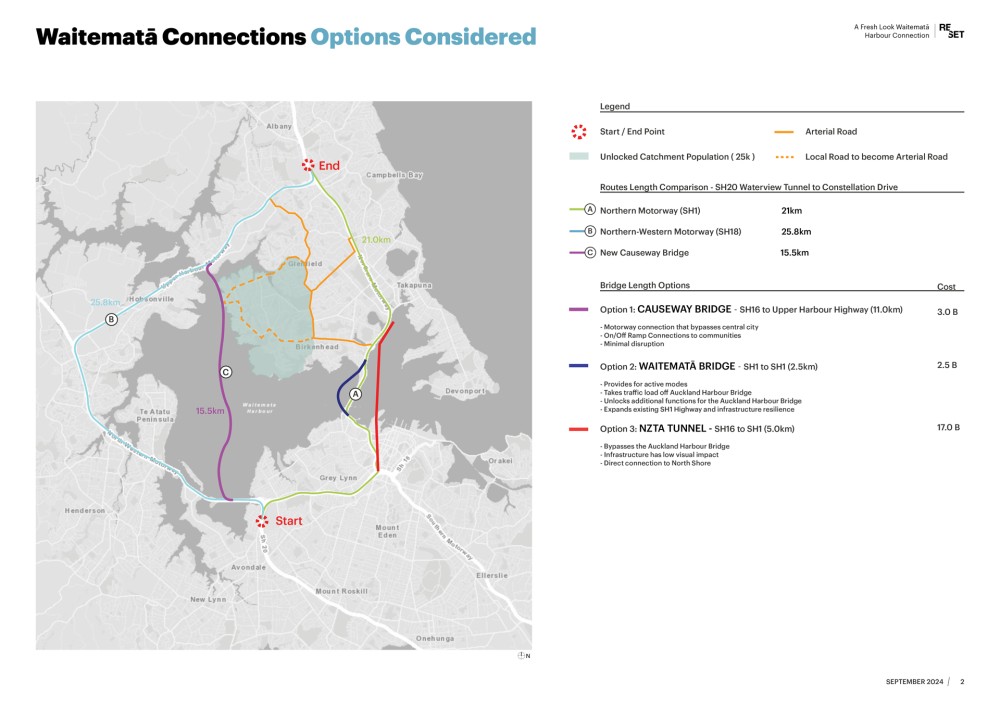
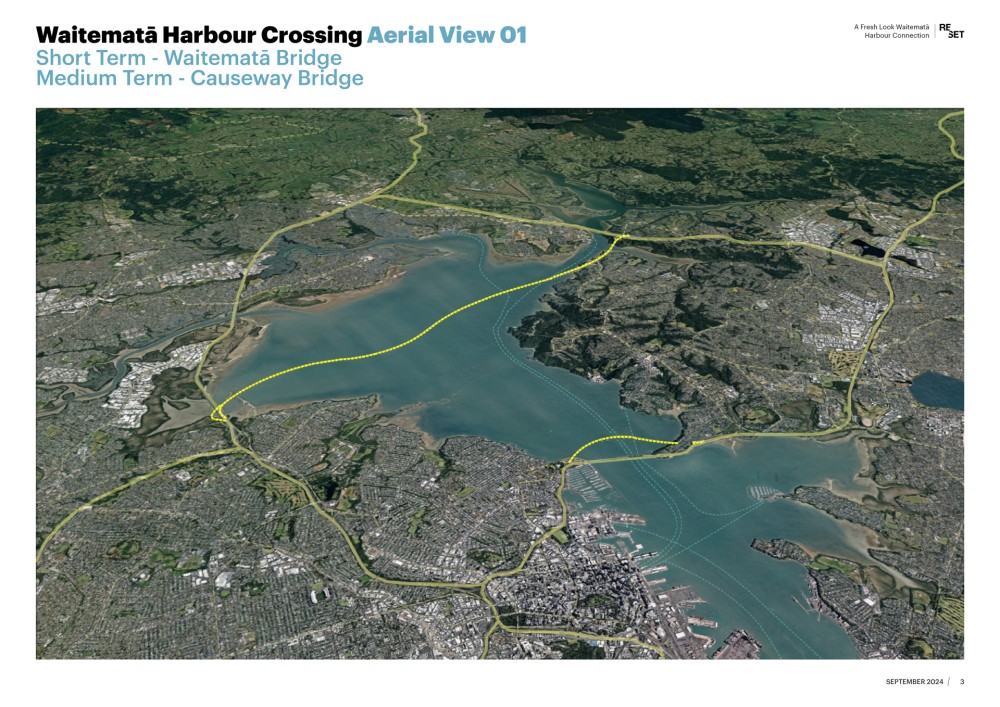
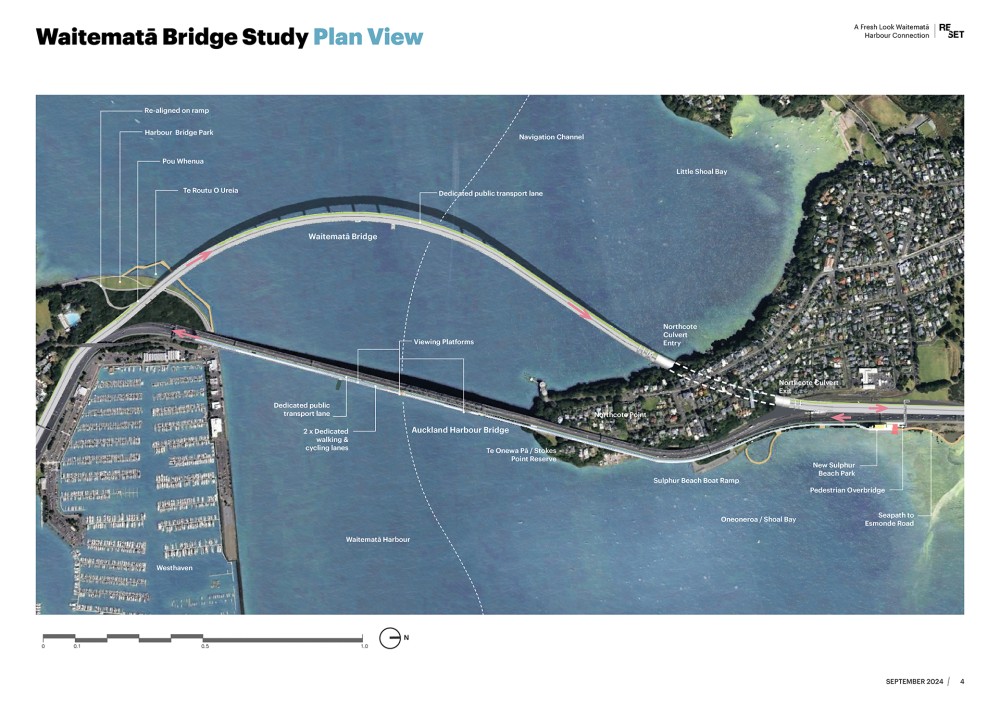
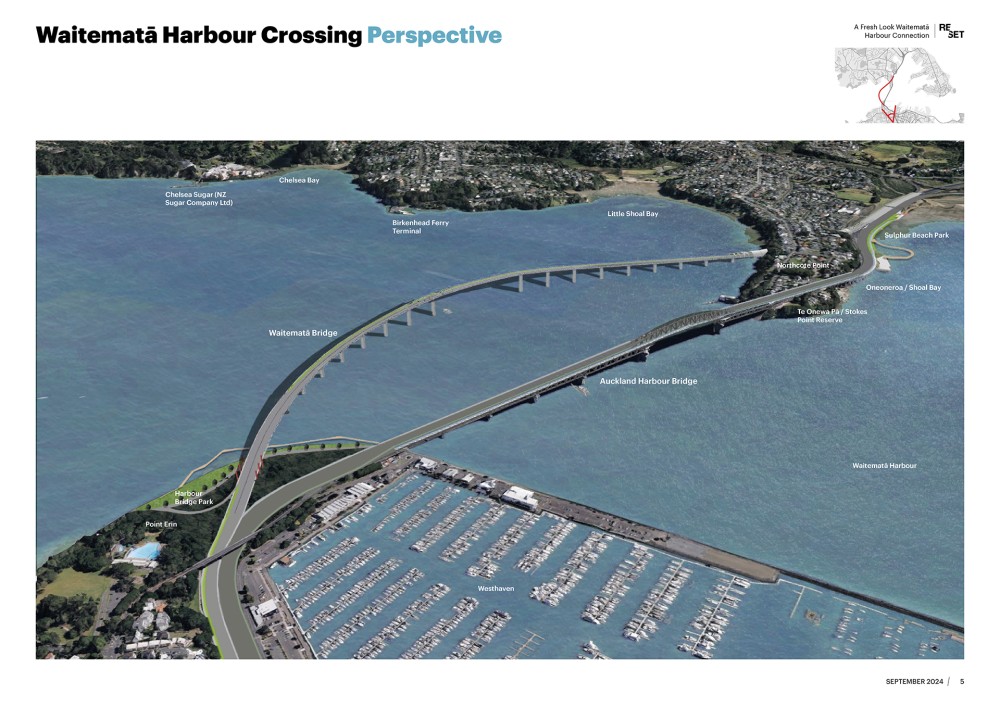

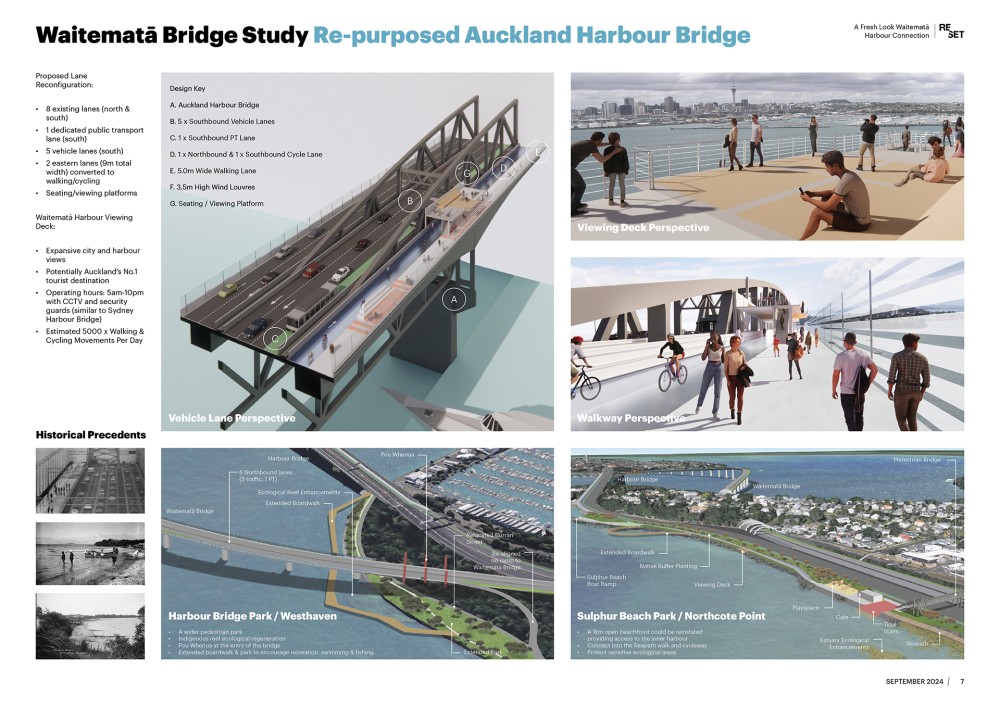
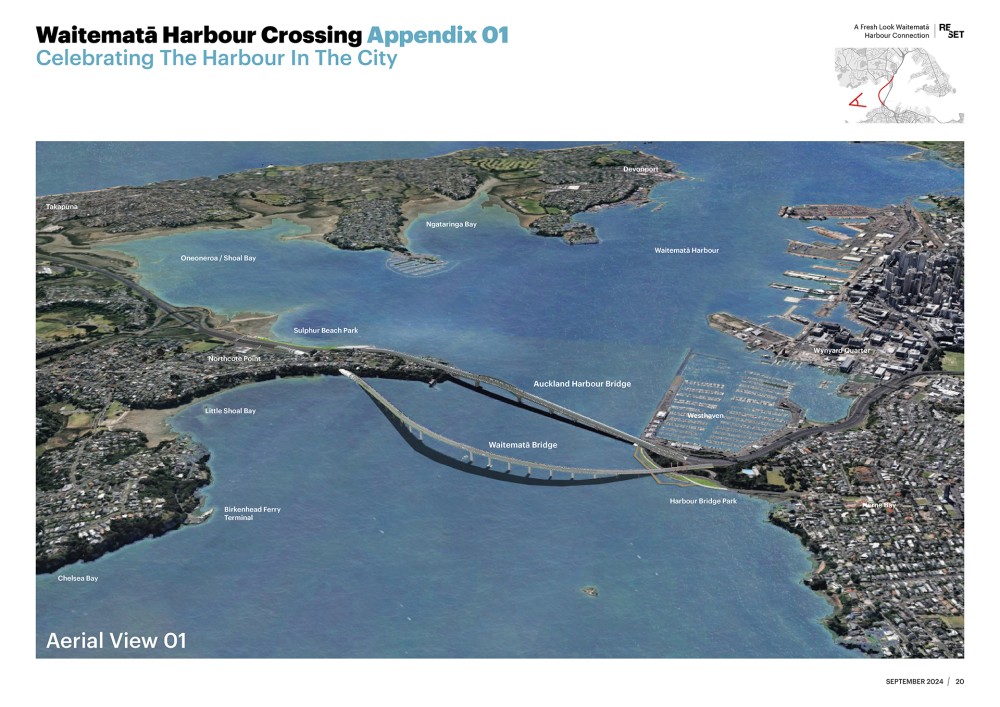
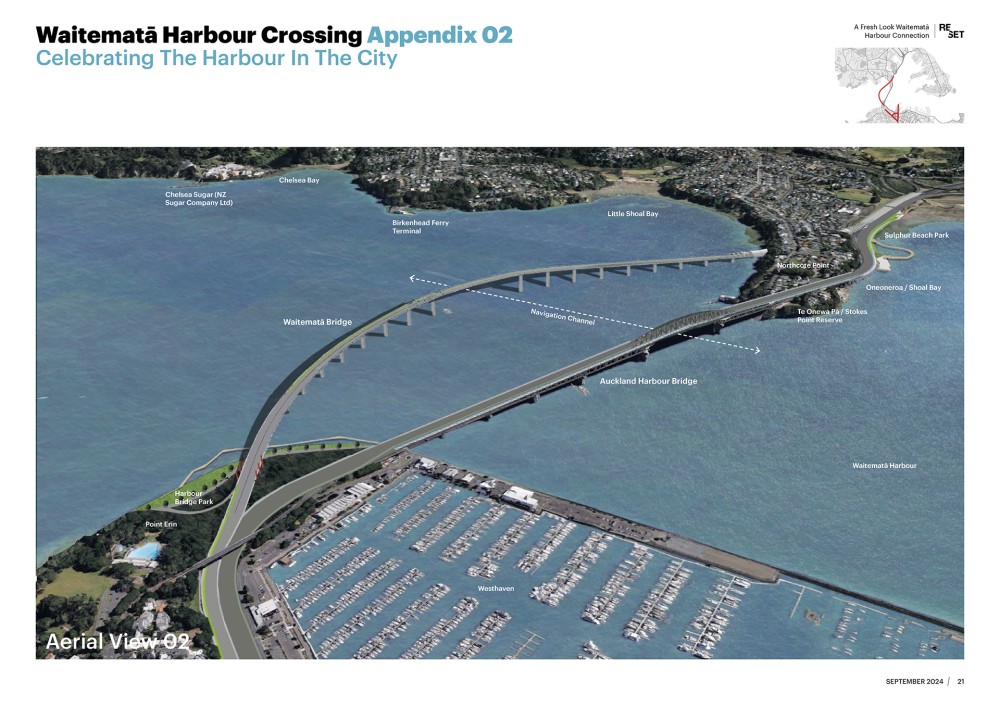
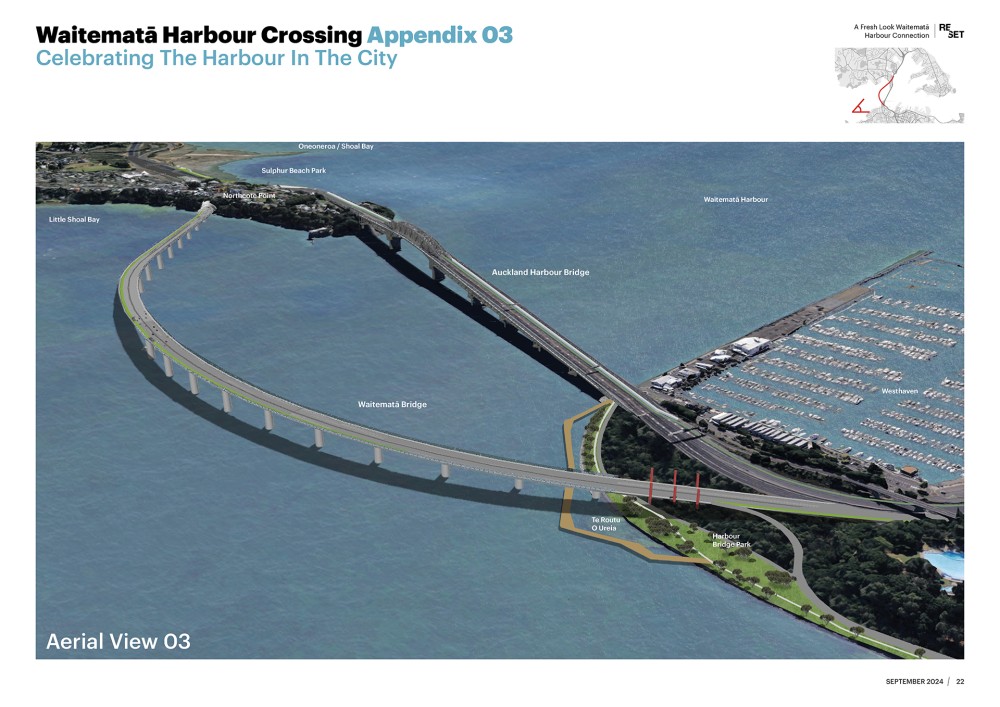
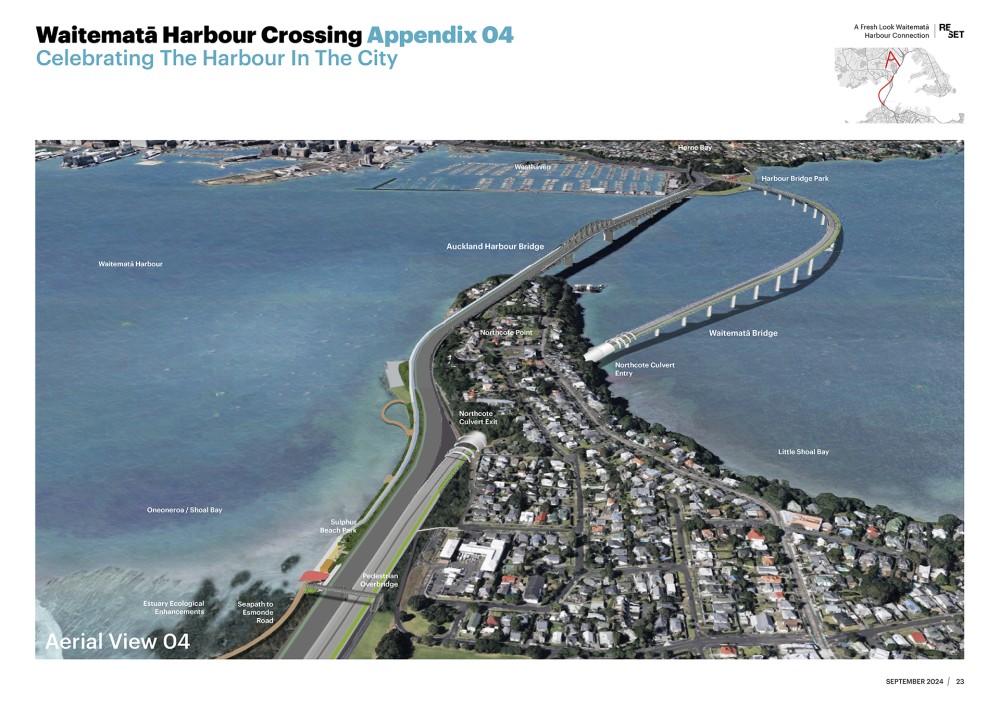
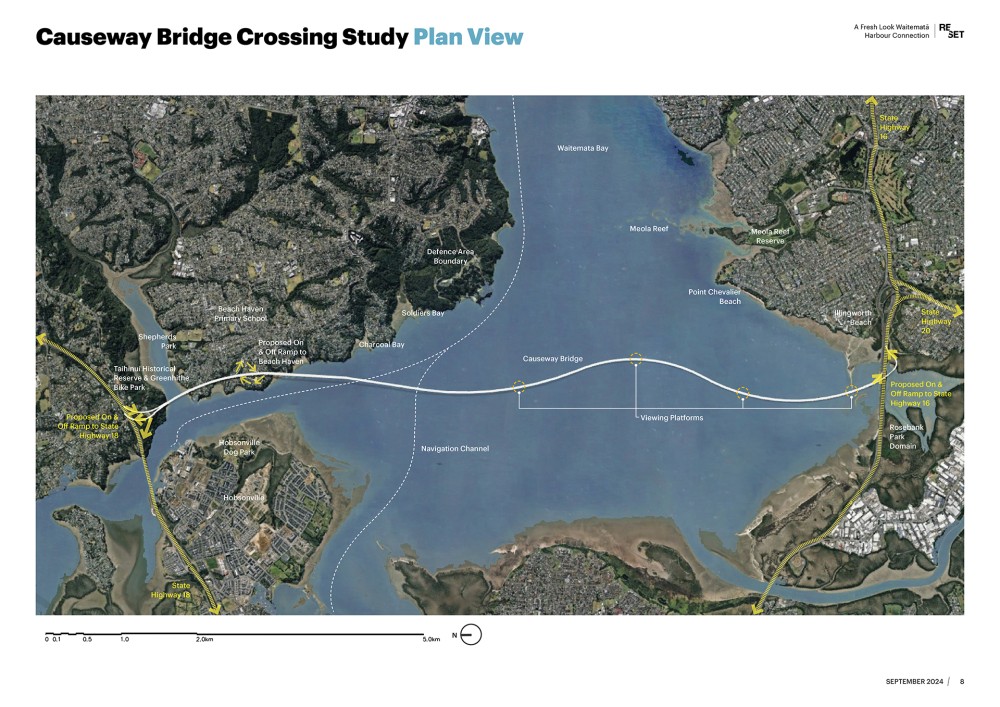
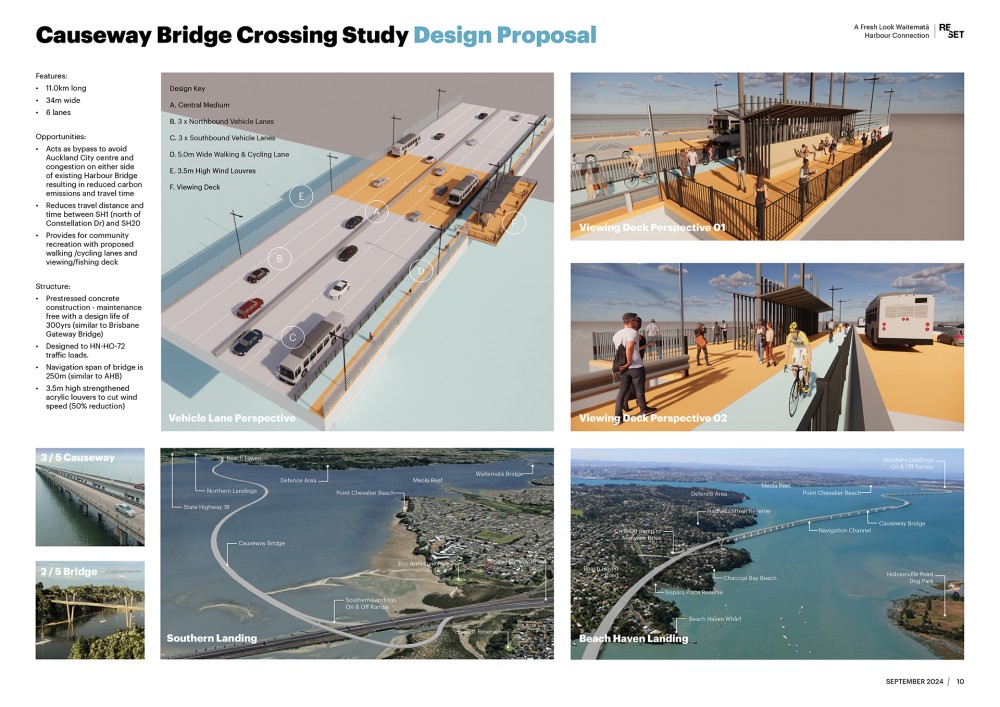
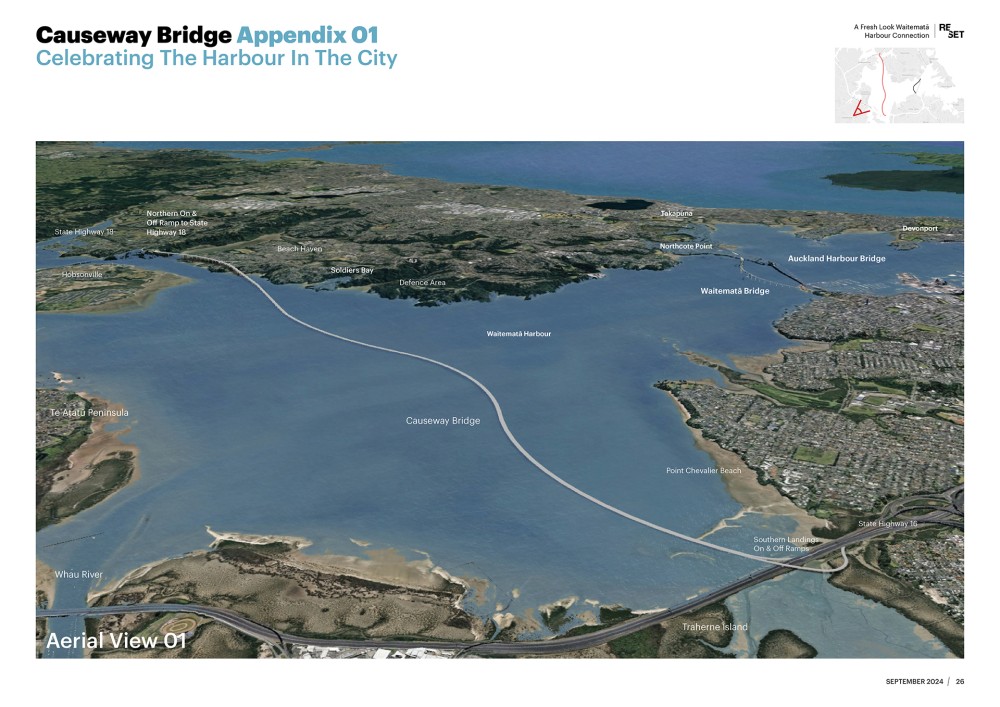
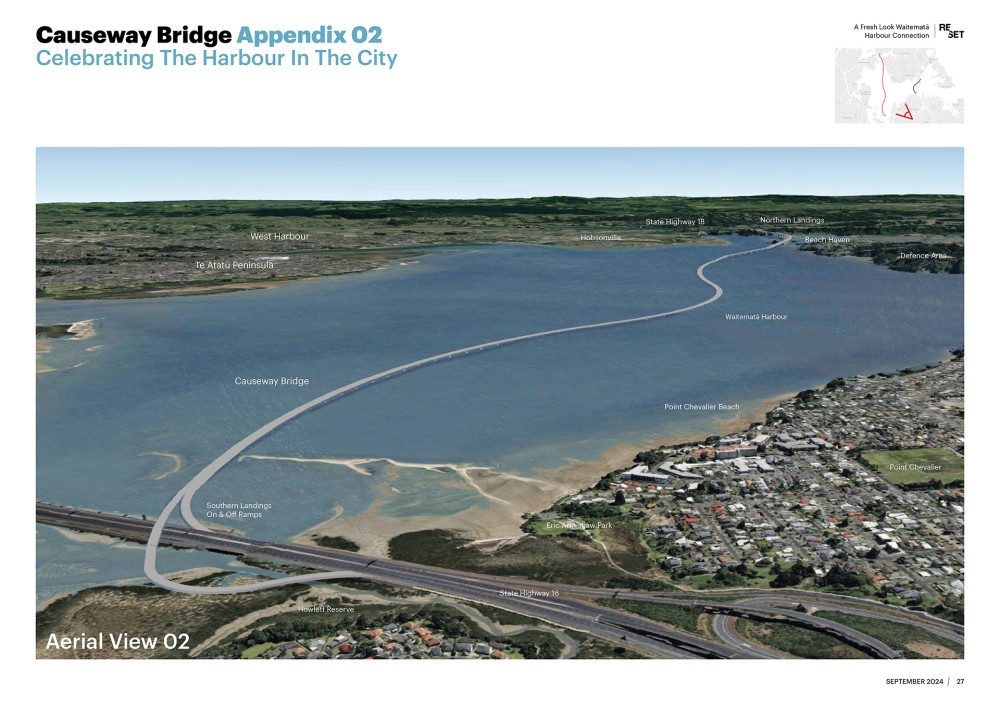
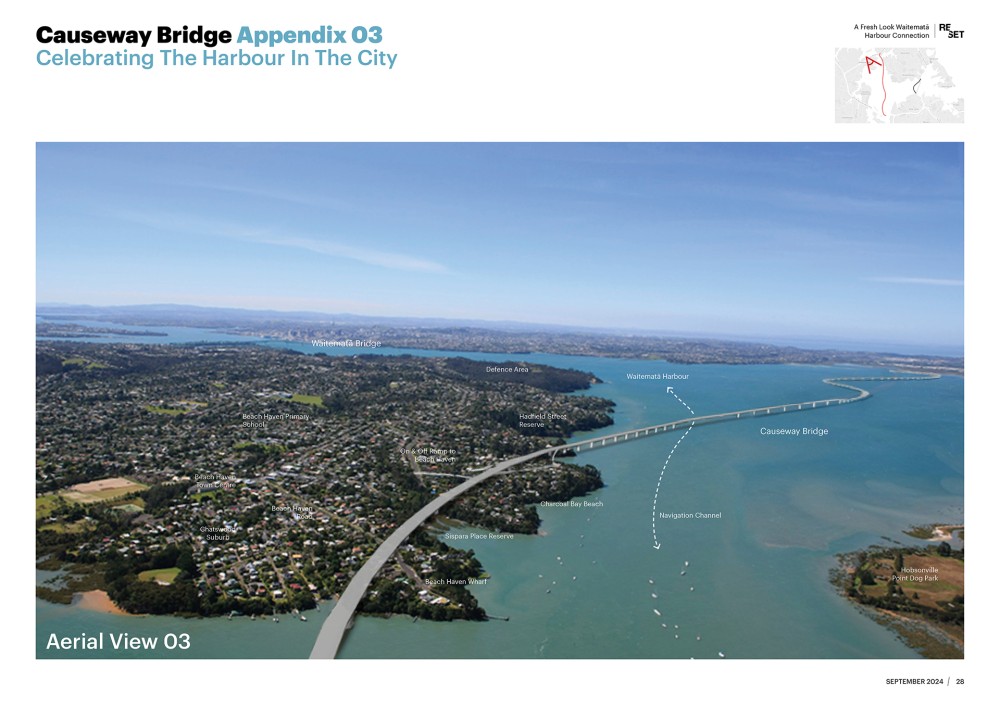

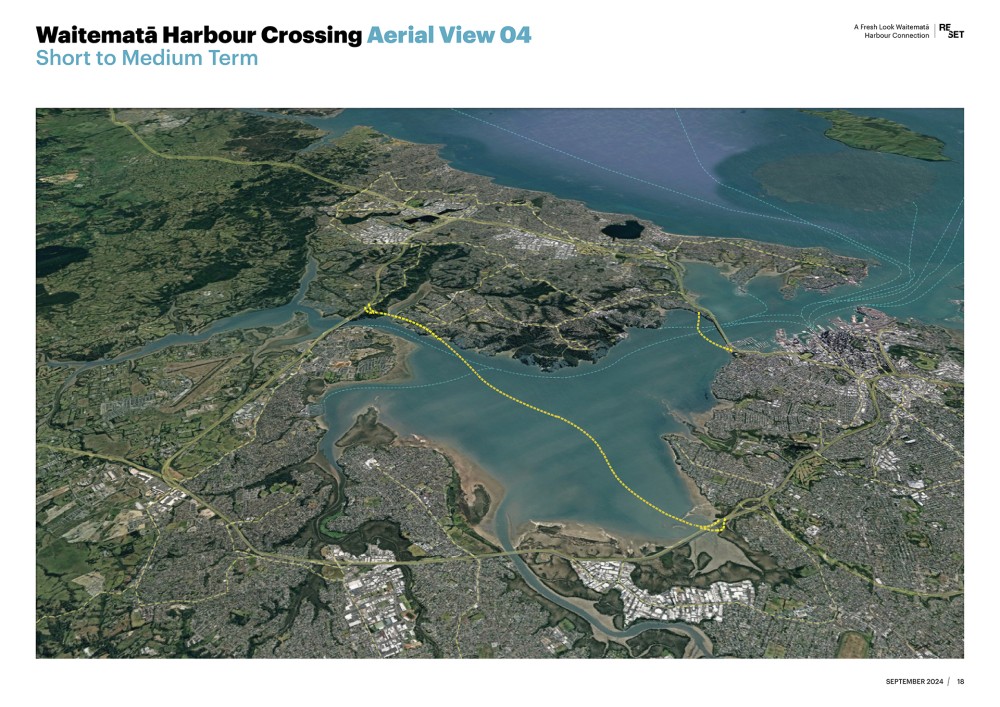
Back to all articles
Published
17 September, 2024
Author
Penny Hartill
More articles Pitopito kōrero
Practice Tikanga
At Reset, we offer a broad scope of services within the specialist areas of Urban Design and Landscape Architecture. We also actively engage in research and have contributed two published books on the history of design in New Zealand.

